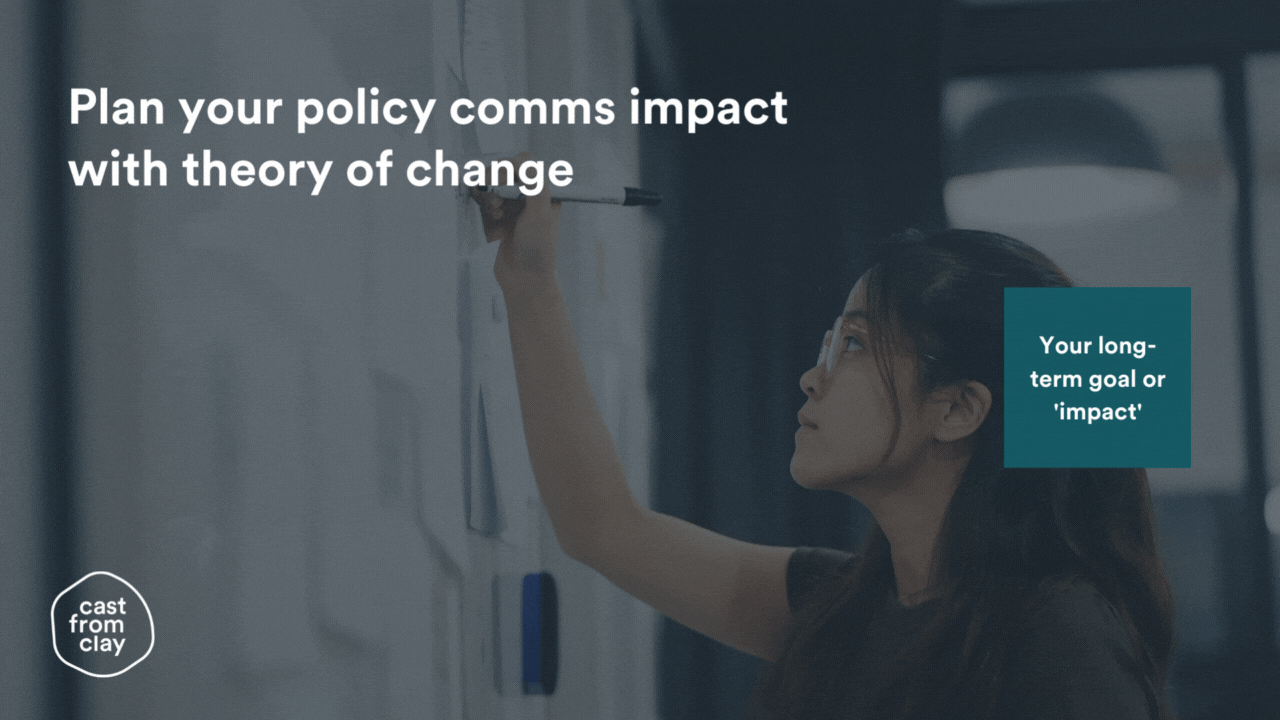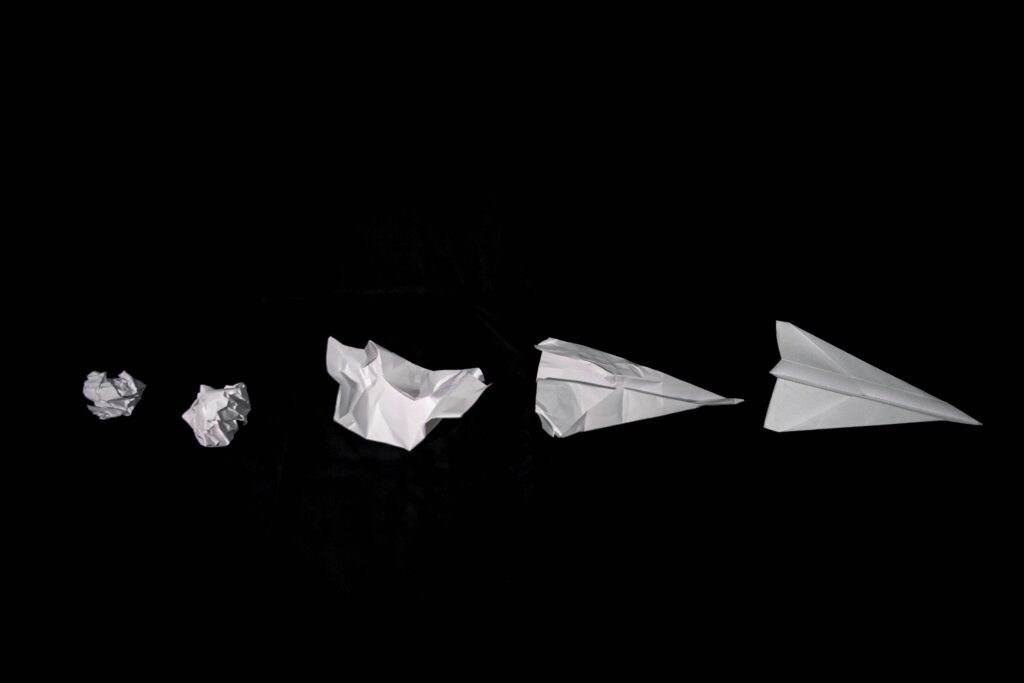What is a theory of change?
At the heart of effective policy-making lies a simple yet powerful concept: the theory of change. It’s not just a buzzword; it’s the cornerstone of strategic impact. Think of it as a roadmap, guiding you through the intricate maze of policy development and implementation. In essence, a theory of change is your narrative of transformation. It outlines the causal relationships between your actions and the desired societal outcomes. It’s about connecting the dots, from policy research to campaign initiatives, and charting a course towards tangible results.
So, whether you’re advocating for policy reform or driving community engagement, a robust Theory of Change empowers you to navigate complexities, inspire action, and ultimately make a lasting impact on society.
Why should policy organisations use a theory of change?
A theory of change articulates how your organisation’s activities cause the change you are aiming for. Whether those activities are developing policy research, initiatives or campaigns, theory of change is a crucial tool for developing strategy. It explains how and why your activities will create your intended results.
Producing a theory of change strengthens programme and campaign design, ensuring alignment with the broader objectives of social change. It does so by clearly articulating how and why a desired change is expected to come about, with reference to the evidence base, and the assumptions or associated risks.
Plus, when produced as part of a group exercise, it helps to ensure that all relevant stakeholders are aligned. Does everyone grasp the objectives and intended outcomes of the project? Are they clear on their role within that plan?
Your team will find it motivating to understand how a desired change happens and the role they are playing in achieving it, illustrating the practical use theory of change in action.
There are many different formats for a theory of change. It could be a diagram showing how you aim to influence a group of critical policymakers. Or a few paragraphs of text explaining how your campaign will create certain results. Or a lengthy report detailing how a policy will create positive change among your target groups, backed up with references to peer reviewed research, acting as a map for your change initiative.
Whatever your theory of change ends up looking like, here’s why it could help you make sure your work is as targeted as possible.
1. Align on impact
Co-creating a theory of change forces a team to think systematically about what a policy or campaign does and how it creates results.
You may think this is unnecessary or that disagreement is unlikely. But in reality, colleagues can hold different views and assumptions on the fundamental factors of a policy or campaign.
Let’s say you want your long-term impact to be improving the quality of early-years education. One of the contributing outcomes you may want to achieve could be shifting how early-years education is perceived among certain influential audiences. Targeted social media activity may therefore be one of several activities that you think will feed into this outcome.
Plotting out these links in your chain can build consensus around the value of this social media activity. It can earn buy-in from senior leadership, help protect your budget, and keep your project team focused on content that will help achieve this goal.
Improve your impact with our online course
Find out more2. Inspire your team and attract wider support
Employees, partners and funders can find it motivating to understand how a desired change is achieved and the role they are playing in achieving it.
A simple narrative theory of change, cascaded to all colleagues, helps everyone succinctly explain how an organisation’s activities contribute to change. It enables everyone to talk confidently, clearly and consistently about the organisation’s work and goals.
Furthermore, funders with their own defined impact mandate will be able to understand more clearly how your project or organisation operates and how collaborating with or funding you can help them to achieve their own objectives.

Start with your ultimate desired impact and plan backwards
3. Unpack assumptions and reveal risks
Developing a theory of change helps you explore assumptions and interactions between different activities. It outlines the key conditions required for your activities to generate the intended change.
Doing so also helps to highlight risks in an approach, and allow you to develop mitigation strategies against those risks. Ignoring these at the outset could lead to finger-pointing if things don’t turn out as intended, highlighting the need for a robust theory of change to guide expectations and accountability.
Unpacking these may involve some simple desk research, or interviews with academic experts or other practitioners who have run similar projects in the past.
For example, let’s say you think a certain channel strategy or type of publication will be the best route to reach and influence a target audience. Conducting interviews with a sample of this group will allow you to test those assumptions. This will allow you to improve your approach before beginning your activity in earnest.
4. Monitoring and evaluation –determine your measurement indicators
Theory of change offers you a chance to set the indicators you’ll use to measure progress on the outputs and outcomes of your inputs and activities right at the planning stage. It is then straightforward to understand how your strategy is progressing, and where you are on the journey to achieving the intended impact.
Armed with this knowledge, you can refine or pivot your plan as needed if it’s not working as you intended.
5. Intervention – identify and learn from failures
All theories are based on assumptions, and your theory of change is no different. You can assess the accuracy of your assumptions by how well they reflect real-world outcomes. So, evaluating your hypothesis in your measurement, evaluation and learning will help you make a judgement.
Crucially, finding out that you are wrong about an assumption is not necessarily a failure, but a vital part of the monitoring and evaluation process. Rather, spotting these and continuously evolving will help to make your project stronger and create greater long-term impact.
Remember: your theory of change process will always evolve
Policies and campaigns evolve over time as you gather feedback and observe results. So should your theory of change, as it serves as the logic model for your social change initiative.
This evolution may result from changing a key component of your approach due to new insights or resource constraints. Or it may follow a discovery of how something creates impact, meaning you place greater focus on what you now know works. This requires flexibility, pragmatism and a willingness to adapt.
A theory of change represents a vital tool for balancing these imperatives. This enables an incremental and collaborative way of delivering the outcomes that policies and campaigns are capable of, built upon a foundation of ongoing monitoring and evaluation facilitated by a theory of change.




